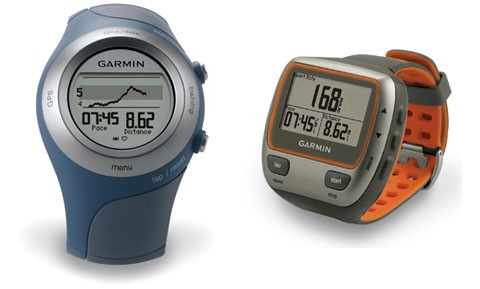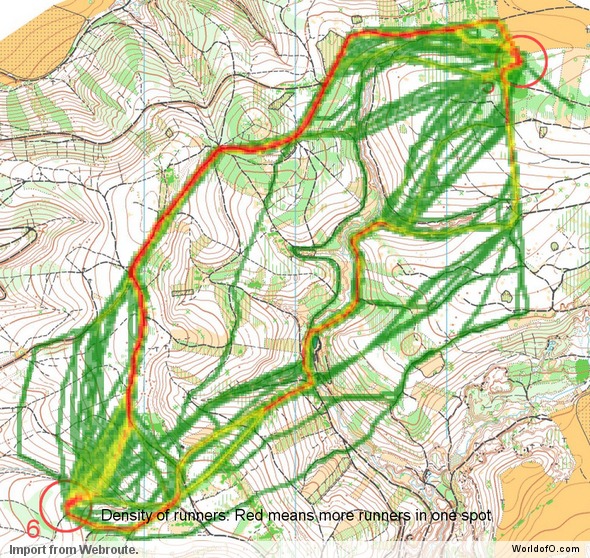
The short version: Passive GPS devices are allowed – sealed/taped GPS watches may not be used. The “ban against GPS watches” imposed by the IOF in WRE events and above according to their modified rule 21.3 has stirred a lot of discussion the last days. As an answer to all the attention, the IOF has published an article entitled “Clarification of IOF Competition rule 21.3 concerning equipment” on the IOF website – which makes it clear that all GPS receivers / pulse watches and other equipment with a display which in any way can aid you navigationally are banned from WRE events and above.
IOF Rules commission answers
– The background to the decision is that the IOF wants to be firm in preserving the key values of orienteering as a sport, and the basic values of orienteering – navigation with map and compass, David Rosen, Chairman of the IOF Rules commission answers via email. – Devices with a display may not be carried, but silent position recording devices that do not give any navigational information to the runner during the race, such as GPS data logger devices without displays, are allowed.. This is basically the same information which is given in the clarification of IOF Competition rule 21.3 concerning equipment published on the IOF website.
Disqualification
– The IOF is committed to implementing rule 21.3 at the 2009 world events, and will take action to monitor compliance, IOF writes in their clarification. – This will be in different forms, both proactive and reactive. It should be clear that an athlete that carries a device that has the functionality to inform about position, direction, distance or altitude during the competition will risk disqualification. It should be clear that covering a display with a temporary seal, such as tape or other means, is not accepted.
National federations?
Unfortunately, David Rosen of the IOF Rules commission failed to answer one of the most important questions we asked in our e-mail – namely “How does the IOF want/expect federations to follow-up this rule on national basis”?. A follow-up of this rule on national basis to include orienteering events on all levels would be a bummer for all those who have bought expensive GPS watches… We are still hoping to get an answer from the IOF on this item though – and will keep you posted if we hear something…
GPS Loggers
There are a variety of GPS Loggers available for $50-$100, and thus the GPS Watch ban should not be a big problem for the analysis of orienteering competitions – except for the use of combined HR and GPS data. Mats Troeng (the creator of QuickRoute) has been testing one GPS logger which gives acceptable accuracy as long as it is positioned correctly (see discussion at Alternativet.nu forum).
My personal opinion is that the IOF decision is understandable based on the possibility to cheat, but I hope this rule will not find its way down to local events… I myself have one GPS watch and two GPS data loggers (of type Globalsat BT-335), and find that i prefer using the GPS watch as it is easier to know that it really works, easier to read out data after the competition, easier to mount it in a way where it gets good satellite coverage, etc. Mr. Routegadget runs with his GPS logger at his back in a sock held by a few safety pins – does anybody have a better way to carry his GPS logger? Maybe the orienteering equipment providers could come up with a good combination of GPS data logger + mechanism to wear them (west, arm strap, etc.).
Discussions
Follow the discussions on discussion forums:
 World of O News
World of O News

GPS watches and similar gadgets are, in general, nothing more than a way to make your trainings more interesting. It is like a toy, and you can use all of its capabilities in your training sessions, but you should be able to run in the big competitions without it, if you can’t then maybe really it makes some advantage over others who don’t have such gadget. The problem that now we will be unable to draw our paths on the map doesn’t seem to be a big problem. Of course, in some way it is a little step back, but is should encourage organisers of big competitions to allocate GPS devices to all runners which at the end should make our sport much more attractive.
I have a Polar RS800CX with the G3 pod. This is a heart rate monitor whit built in GPS recording. It also functions as a watch (primary reason for buying it was the GPS tracking). Whiles recording there is no way to see the longitudinal axis on a display. I have no experience with other brands, but I think its the same with them. Using the altimeter on the watch as a tool for example whiles running a hill and you know you have to drop or climb 20m, is near to impossible. Its far to inexact, and it does come with a bit of a time lag. I have done a few tries whiles training, its more a waste of time then a time saver. Another thing on my Polar is that altitude is measured using barometric pressure, which may change rapidly. Another reason not to use it. I use my watch for analyzing training and as a helpful tool whiles training. The new IOF rule seemes to be made up by people who has never tries to use one of thees devices. GPS watches are not tools, they are training aids and gadgets for us freaks that are obsessed with numbers, heart beats and meters climbed in a session. Dagdag out.
Hi there, Dag :)
The Polar altimeter is probably not so useable in Scandinavian terrain, but in steep terrains, like for example WOC in Japan, it can be a good tool when you know you’re going to climb 200 m to the control – which is placed in the middle of the hill.
Anyway, I don’t think the best runners are using any of those tools during competition, and if someone ever used it – it was just for trying it out.
But here’s my another question – HR monitors and digital watches. I have heard about runners (WOC-medallist) using their HR monitor all the way, to monitor the pulse – and keeping it in a pre-defined zone. Isn’t it the same?
What about pacing with normal watch? If you’ve ran 100 times in a similar terrain, and know your pace is approximately 4.30/km, then it can be used?
What about new high-tech O-tops? Is it fair to run with Trimtex or Noname which exports your sweat away and keeps your body cool, when there are others running with shirts from the 80’s??? Is it fair to let the Swedish and Norwegian national teams run with special CRAFT-made tops which are termo-regulating (WOC in Japan, JWOC in Switzerland)?
What about sweat band? Those not using it are loosing seconds due to sweat in the eyes, and bad possibility to focus your eyes on the map …
It’s never going to be the same, and IOF can’t just decide using one type of shoes, one type of tops, one type of compasses and so on to keep the sport fair …
According to the current rules in Switzerland, the use of GPS Watches is not allowed (see german text below). But until now, as far as I now, nobody has been disqualified or had to leave his GPS Watch at the start.
Swiss Orienteering – Rule Nr 54:
“2 Während des Wettkampfes darf der Läufer insbesondere nicht mit sich führen:
a) elektrische und elektronische Geräte, die Informationen über den Wettkampf
vermitteln oder die Orientierung erleichtern können; ”
during the competition, the runner is not allowed to carry any electric or electronic devices, which provide information about the competition or can help to orienteer.
Ivo:
There is a lot of equipment that is suppose to help reduse the stress on your body, but does it actually work or is it a “placebo”?
HR-monitors are an electrical aid, so using one would lead to a disqualification. All depending on how you interpret the rule. Runners on a WC level should know their body and the signals it sends so well that they would not need a HR-monitor. But still. The map and compass is the key points to orienteering..
It seems that wearing GPS watches that are unlikely to give any practical advantage are to be policed, but officials look the other way at someone clearly following another runner in the forest.
Go figure?
May the people at IOF please take off their gray clothing and step out of the office to face reality; GPS watches or similar cause no “harm” to our sport.
Well use of the old map and compass are still the fastest way to victory.
I believe that the TracTrac-GPS-unisex-top (S,M,L) can carry GPS-loggers as well as tracking-units.
We have them produced in bundles.
Jakob> Buy an ad (if it help you, Tractrac is out anyway..)